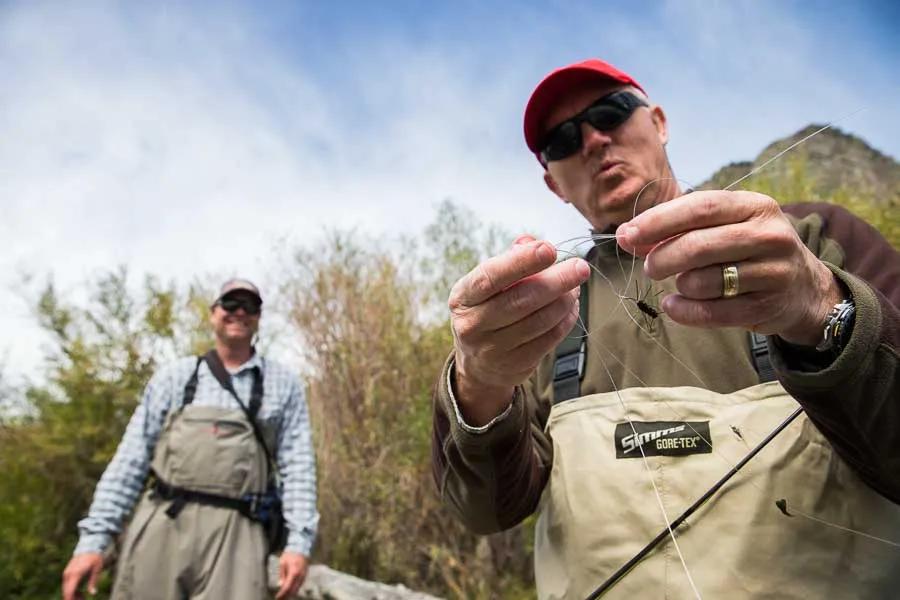
There is a lot more to Montana fishing than just the catching, but getting a few trout to the net never hurts! Here are a few tips that most of our guides use with our fishing guests to instantly help folks get more hook ups with very little extra effort.
Use foam patterns when fishing dries
We still fish a lot of great traditional patterns like the stimulator and royal wulff when fishing attractor dry flies and fur ants or Dave’s hoppers for terrestrials, but many of our guides have come to rely more and more on foam patterns when guiding. The beauty of foam patterns is that they never sink! By the end of the day this results in your flies spending more time on the water and lest time in the air. Even a high floating hair wing attractor like a parachute madam X can eventually get water logged or pulled under water on a strong mend. When a foam hopper gets pulled under while mending it just floats back to the surface allowing the drift to continue without a new cast. Foam flies simply spend more time on the water and result in more trout to the net by the end of the day.

Use less weight nymph fishing
During most of the late spring, summer and early fall the metabolism of trout is in high gear and they are willing to move a bit for your subsurface presentations. Many anglers make the mistake of fishing too much weight on their nymph rigs with the idea that they need to be scraping the bottom with their flies. Nymphs do not always need to be right on the bottom since trout will frequently move up in the water column to intercept them. If your flies spend less time on the bottom they also get snagged less resulting in more fishing time. Removing some weight also results in less tangles while casting which also effectively increases the amount of time that you are actually “fishing” during the course of a day. Finally, strikes are easier to detect since you are spending less time trying to decipher the difference between a tick on the bottom and a take. When you are constantly bumping bottom you either false set which ends a drift, or assume that some takes are rocks and don’t set the hook at all.

Make less false casts
Most guides hate to see good water float by while their clients are making false casts. Many fly fisherman get into a rhythm when casting and often make many more false casts than needed between their presentations to the trout. False casts should only be made when a dry fly needs to be aired out or the effective length of the cast needs to be changed. Often a simple up and down cast is all that is needed to reposition the flies. By consciously focusing to reduce your false casting as much as possible your flies will spend a higher percentage of the day in the “trout zone” and result in more hook ups.

Raise your rod height
Once your flies are on the water try lifting your rod hand and extending it towards the flies. The rod should almost be parallel to the water (tilting the rod up can pull the flies toward you unless it is a very short cast). By lifting the rod higher of off the water and extending your arm you will be reducing the amount of line on the water that is susceptible to drag and get a better presentation during your drift. A higher rod position also makes mending easier. This easy modification to the rod geometry will result in a more natural presentation and hopefully draw a few more strikes from willing trout.

